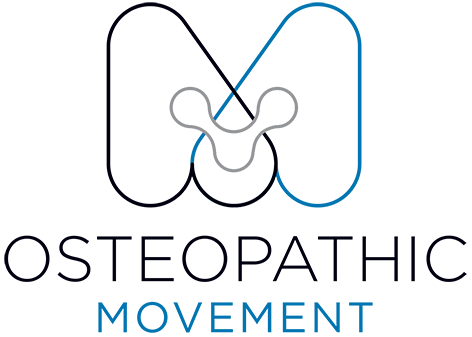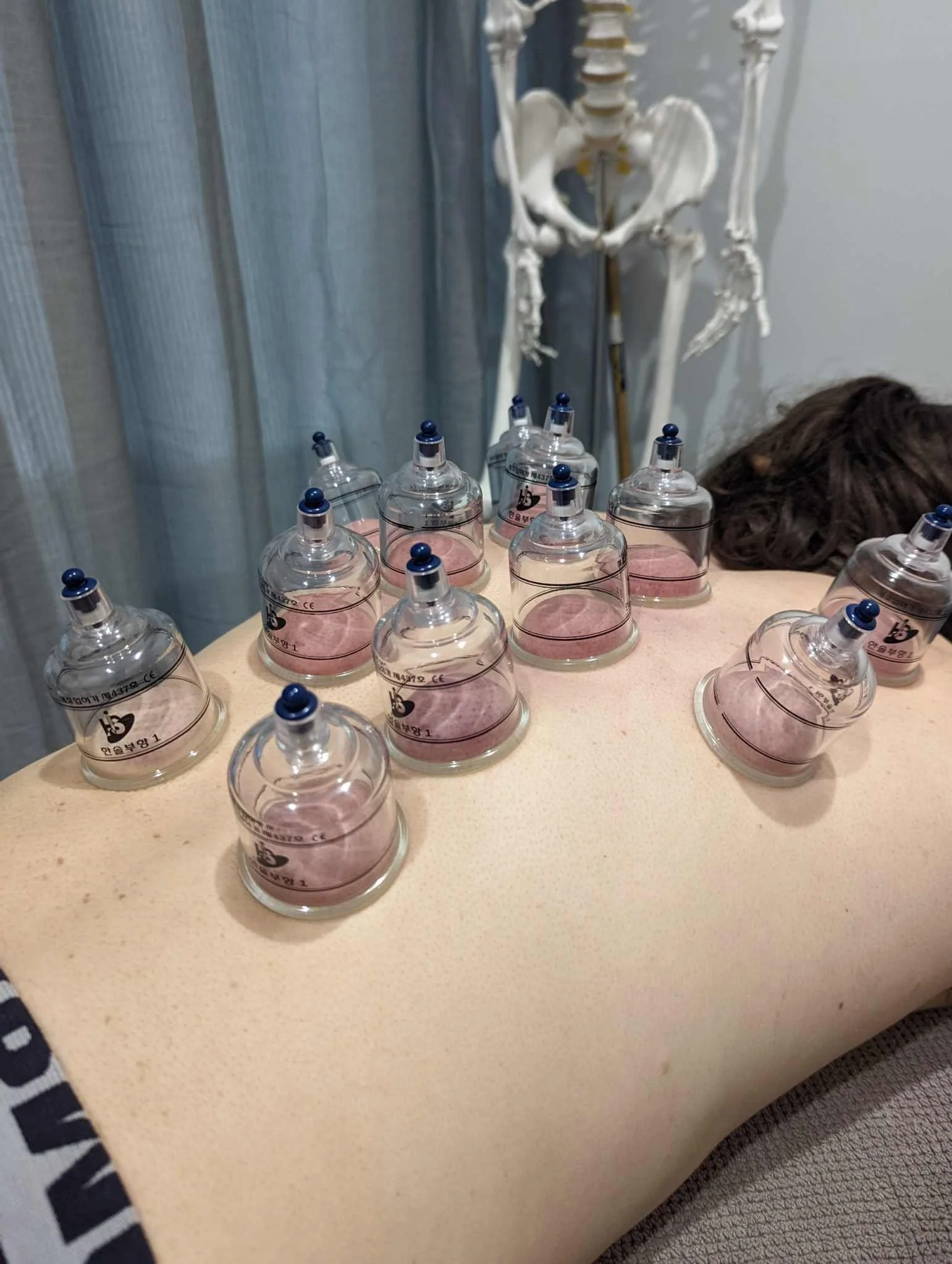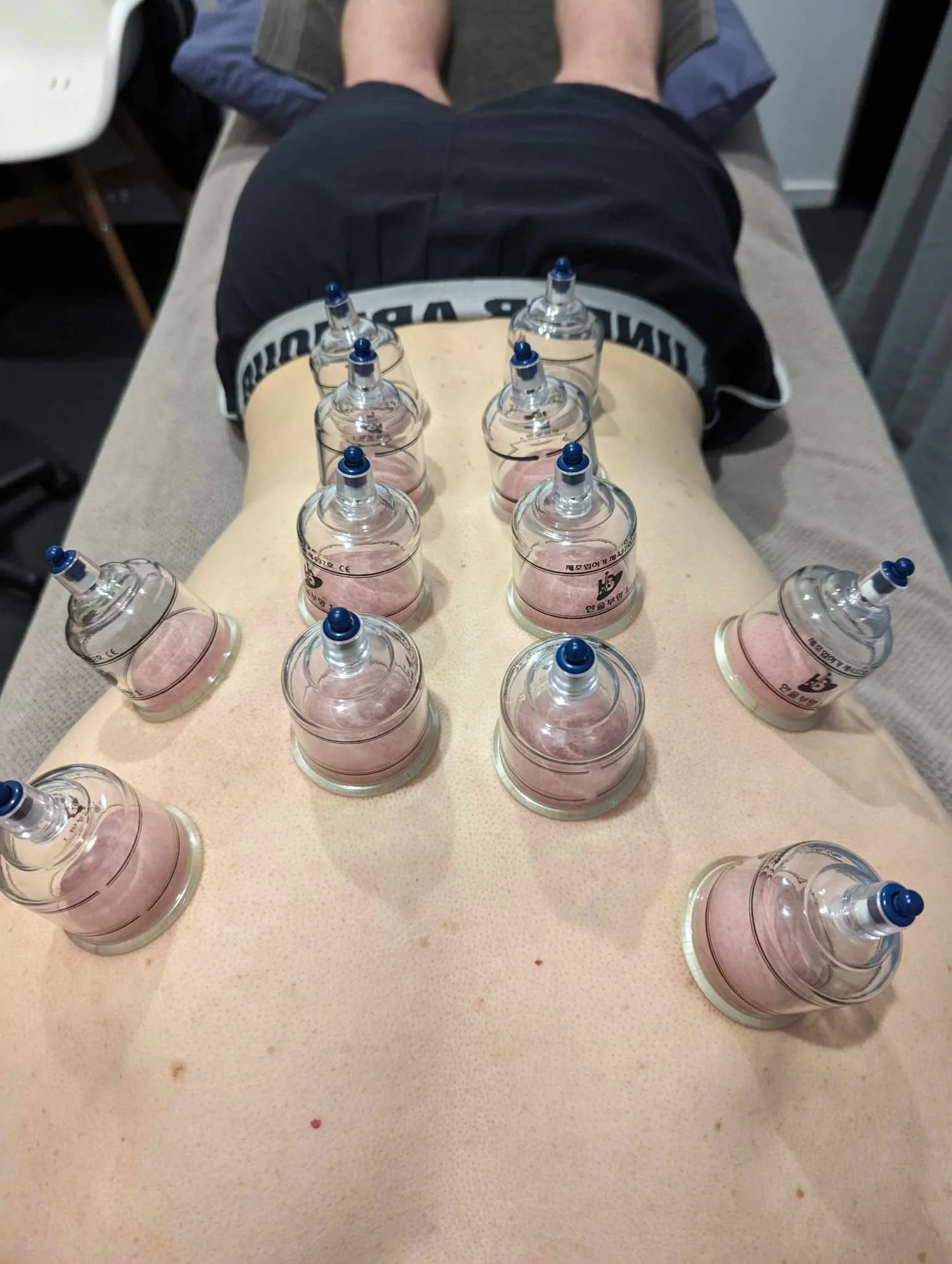Myofascial Cupping
Myofascial Cupping: How It Works and Why It’s So Popular
Ever noticed elite athletes sporting a pattern of circular red marks across their backs or shoulders? That’s myofascial cupping therapy — an ancient treatment technique that’s found new life in modern sports and rehabilitation settings.
Whether you’re a professional athlete, a weekend gym-goer, or simply battling the effects of sitting all day, cupping may help reduce pain, improve mobility, and speed up recovery.
What Is Myofascial Cupping?
Cupping therapy has been practised for thousands of years — with references dating back to 1550 BC in Egyptian medical texts. It’s since evolved through traditional Chinese, Middle Eastern, and European medicine, and now features as a popular manual therapy technique used by osteopaths and other allied health practitioners.
Modern myofascial cupping involves the placement of small cups on the skin, where suction creates a gentle vacuum effect. This draws blood flow toward the surface, lifting the underlying fascia (connective tissue) and muscle slightly away from the body.
Common treatment areas include the back, neck, shoulders, hips, and thighs, though cups may be applied anywhere muscle tension or fascial restriction is present.
What Does Cupping Do?
The scientific mechanism behind cupping is still being researched, but growing evidence supports its potential to:
Promote local blood flow and nutrient exchange
Reduce muscle tightness by separating fascial layers
Stimulate the nervous system to reduce pain sensitivity
Improve tissue recovery following training or repetitive strain
For athletes, these effects can translate into faster muscle recovery and improved performance.
For office workers or anyone with chronic postural tension, it can mean relief from stiffness and better movement quality throughout the day.
What Conditions Can Cupping Help With?
Cupping may be beneficial for:
Low back pain
Neck and shoulder tension
Headaches and migraines
Knee pain and tight quadriceps
Carpal tunnel or forearm overuse pain
Your osteopath may combine cupping with other hands-on techniques like soft tissue massage, stretching, and joint mobilisation to achieve the best result.
Is Cupping Safe?
When performed by a trained practitioner, myofascial cupping is considered safe and well-tolerated.
However, it should not be applied over:
Major blood vessels or nerves
Open wounds or inflamed skin
Areas with active infection or bruising
Mild redness or circular marks may appear afterward — these are not bruises but a temporary effect of increased blood flow to the area, typically fading within a few days.
Some people experience mild fatigue or lightheadedness after treatment, so it’s best to rest and hydrate well afterward.
The Takeaway
Cupping follows the simple principle of “out with the old, in with the new” — it helps clear tension and promote circulation, giving your tissues a renewed sense of vitality.
Whether you’re recovering from sport, managing chronic tension, or simply curious about the benefits, cupping is a safe and effective way to support your musculoskeletal health.
How To Book Your Appointment
Our South Yarra osteopaths incorporate cupping therapy as part of a holistic approach to pain relief and functional recovery.
• Meet our South Yarra osteopaths
• Explore our Osteopathic Clinic
• Book your appointment online
Myofascial Cupping in Action
Cupping Therapy for Back Tightness
Written By Dr. Serena Kuo (B.AppSci(CompMed), M.H.S (Osteopathy)) - Associate Osteopath, Osteopathic Movement, South Yarra.
References:
Cao, H., Li, X., & Liu, J. (2012). An updated review of the efficacy of cupping therapy. PloS one, 7(2), e31793.


